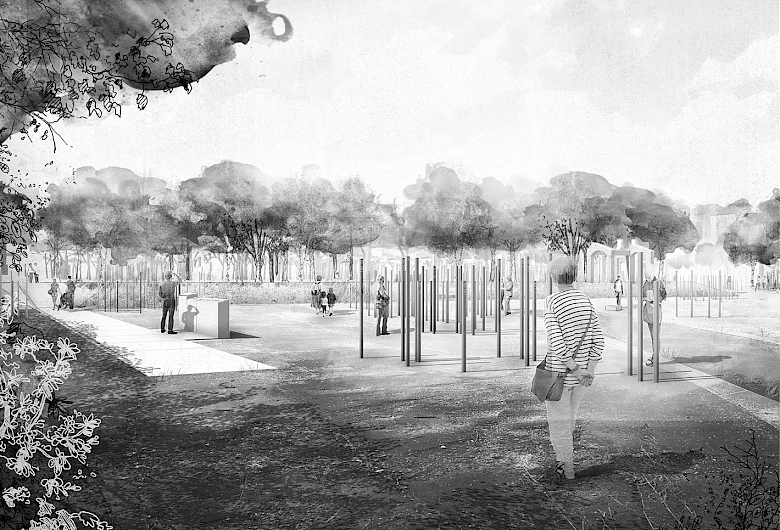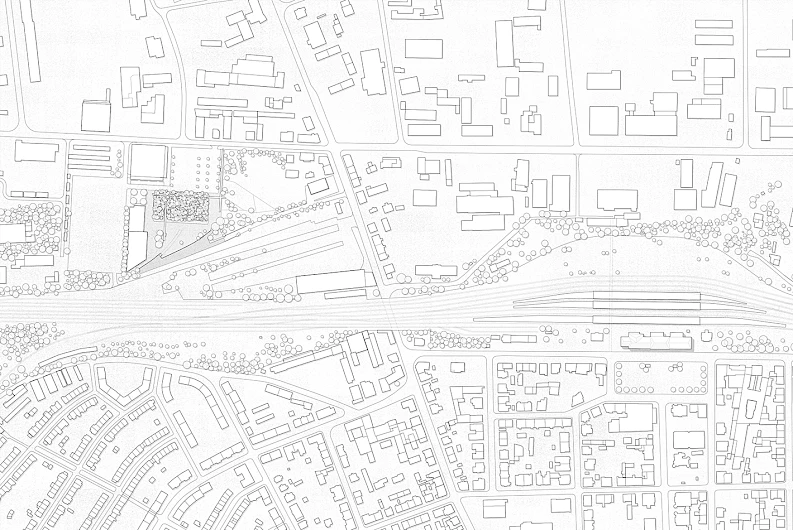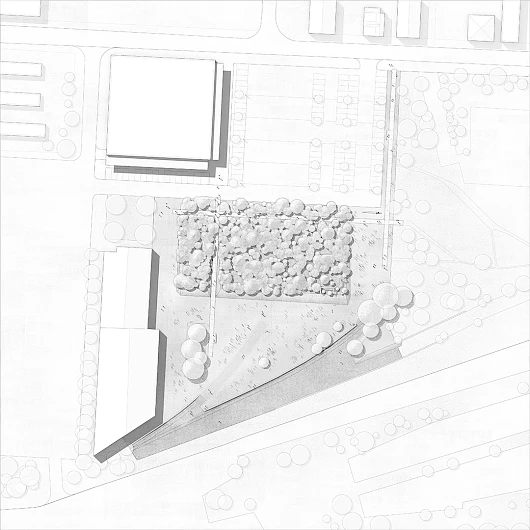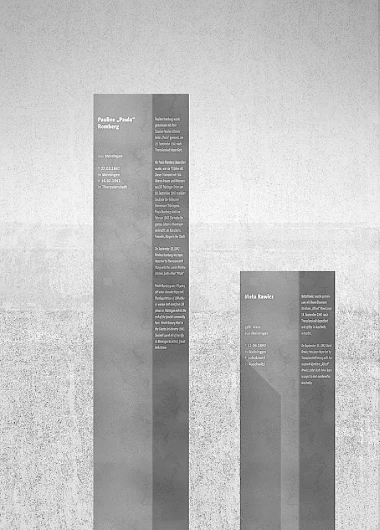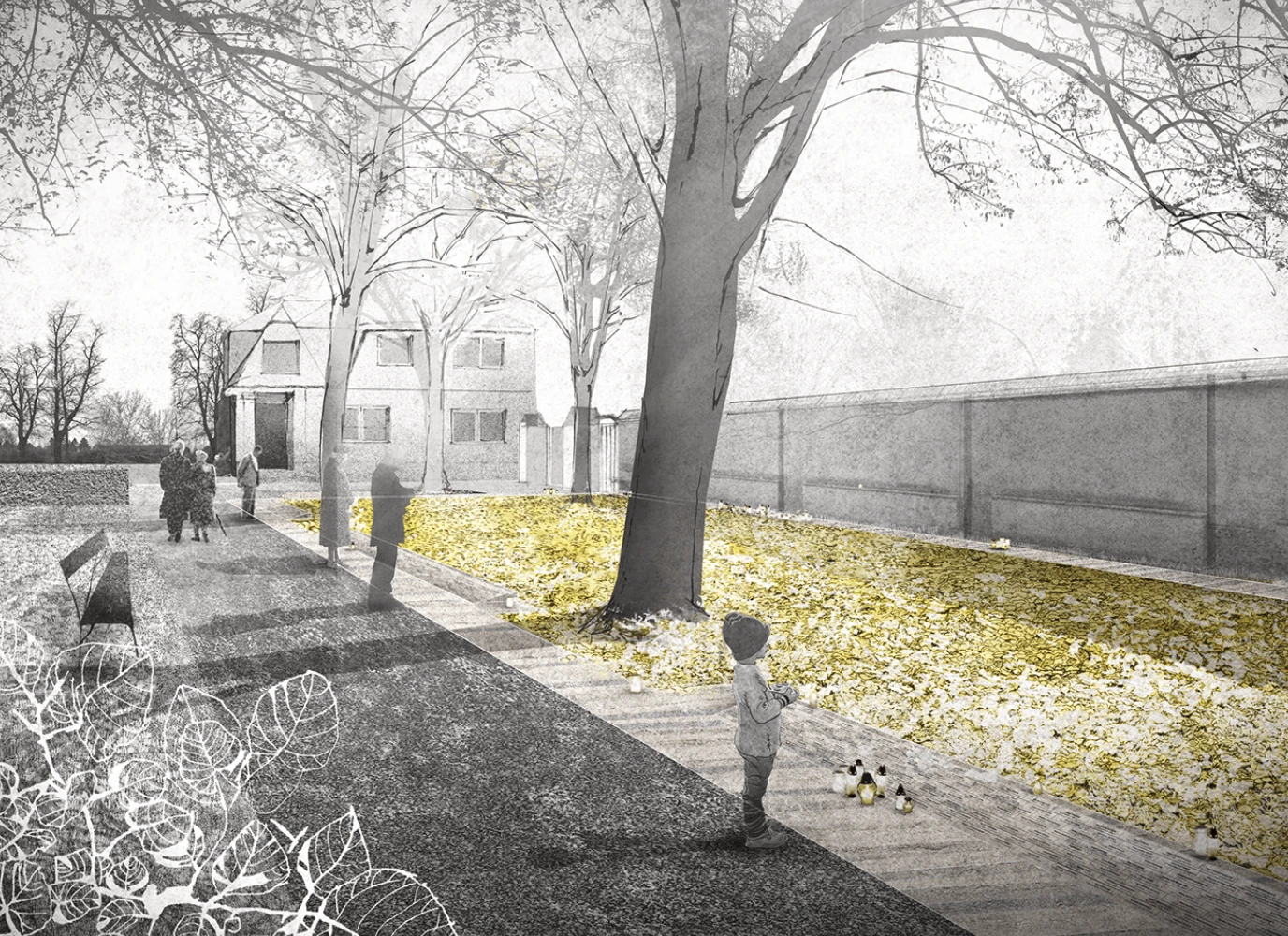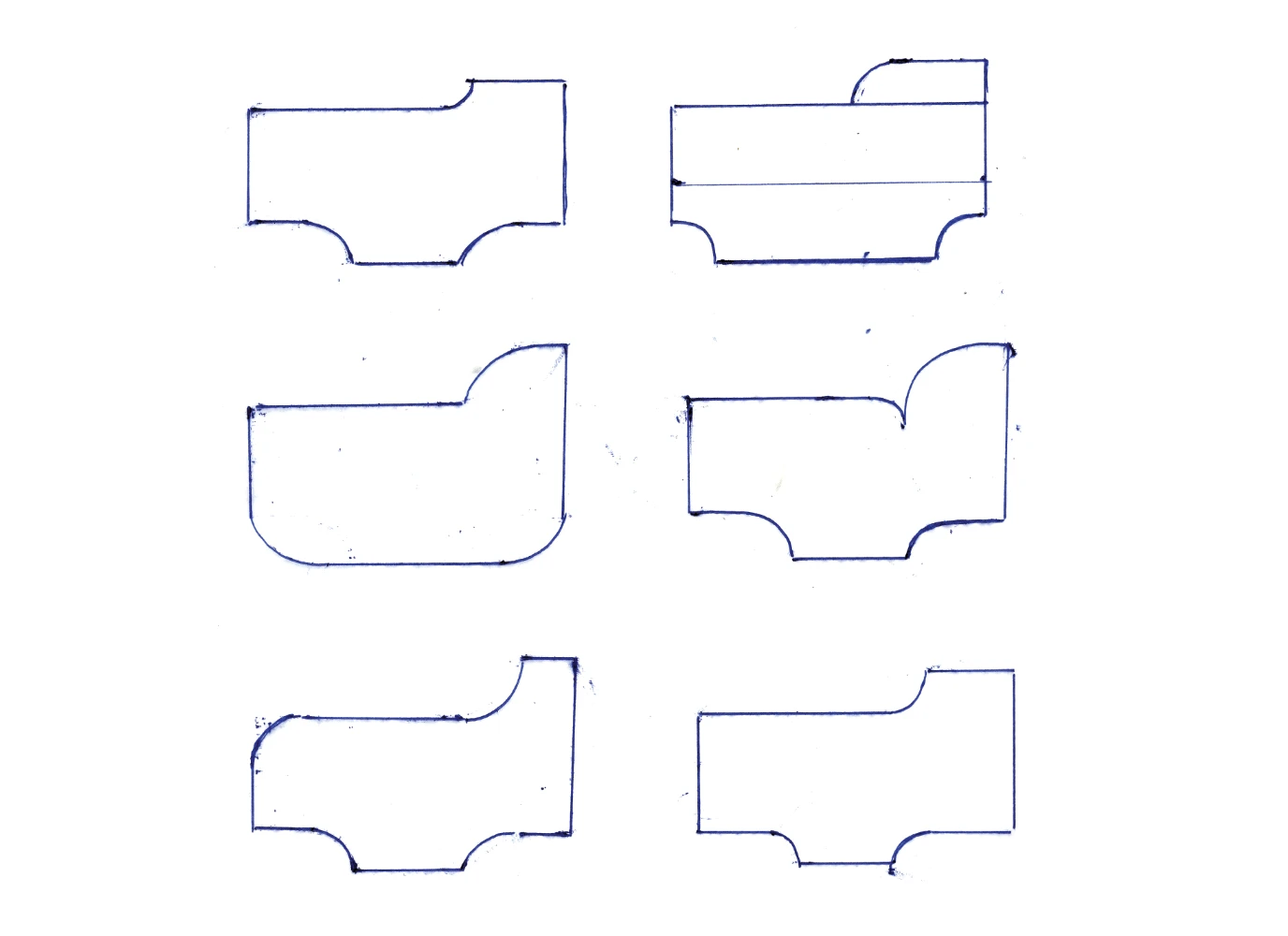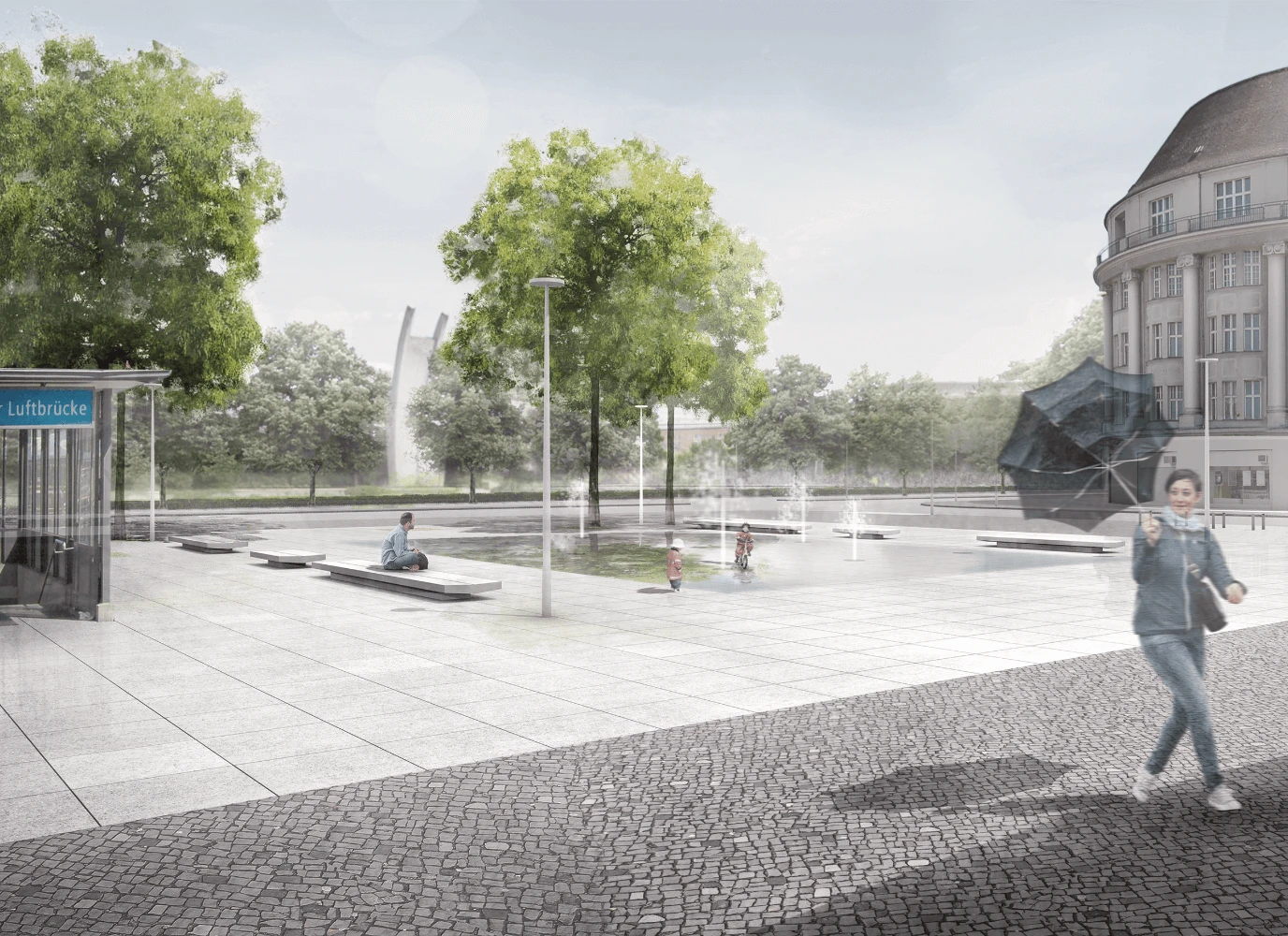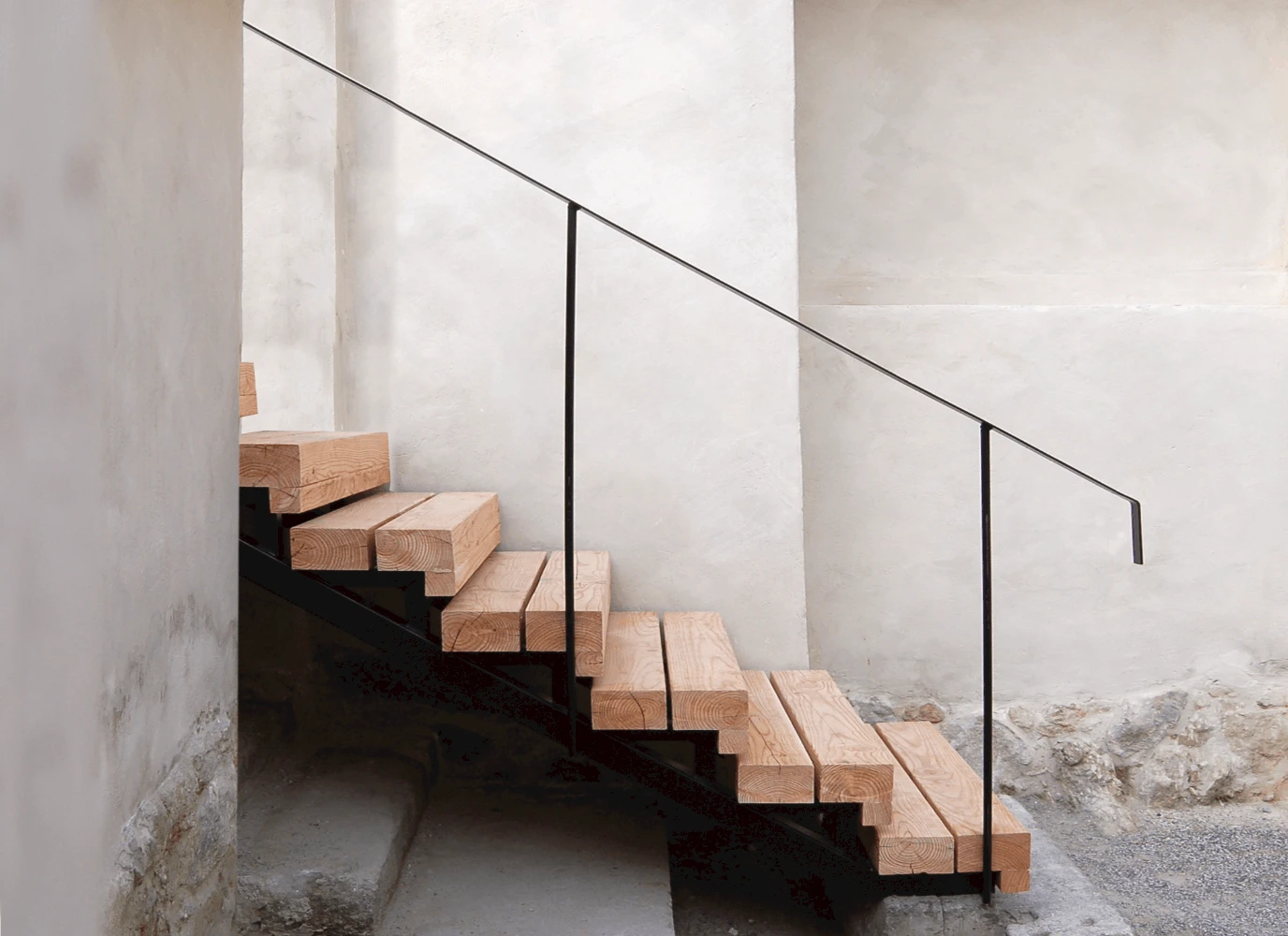Memorial Site Viehauktionshalle, Weimar
On 9 and 10 May and 19 September 1942, the Gestapo used the cattle auction hall as a collection camp for deporting the Jewish inhabitants of Thuringia. 877 people were forced to travel from there to the National Socialist ghettos, concentration camps and extermination camps where most of them died. Evidence of this history lies hidden in the surface; the mass tragedy of human destinies is illegible. With removal of the spontaneous vegetation on the tracks used for deportation, the view to the former freight station is exposed. Simultaneously, the area of the cattle auction hall destroyed by fire in 2015 will be occupied by a ‚ruderal‘ grove of trees. The location is integrated into the urban space via a minimal path and information system. The visitor path opens up the entire site in the form of a narrative line. Three places of information located on the path narrate various aspects of history. In response to their unworthy treatment, it is an aim of the design to allocate individual attention and space to each of the 877 victims. Each of these gains presence in the area via a memorial pillar. This is inscribed with the name, the place of origin as well as the date and place of birth and death. The slender metal pillars are distributed in small groups over the area according to the family- and place affiliation of the victims. Individually hardly visible from afar, the pillars then become visible in their density and number. Only on approach does an engraving at eye level reveal the names and biographies.

